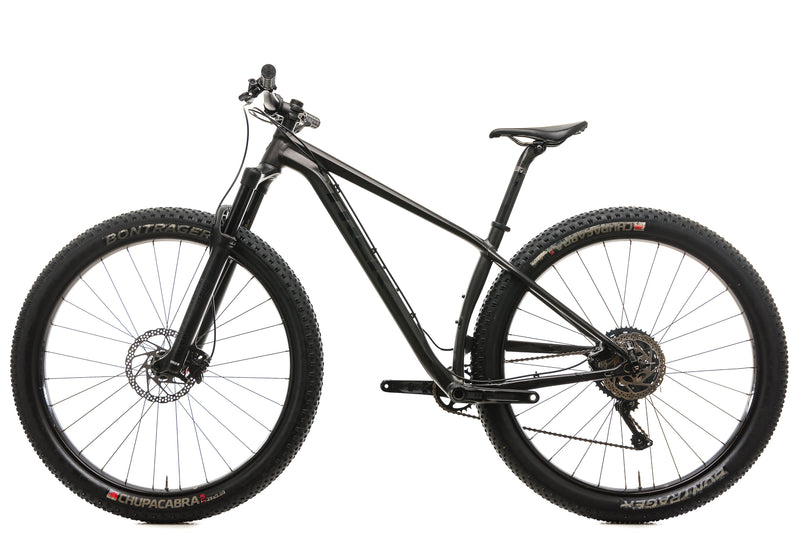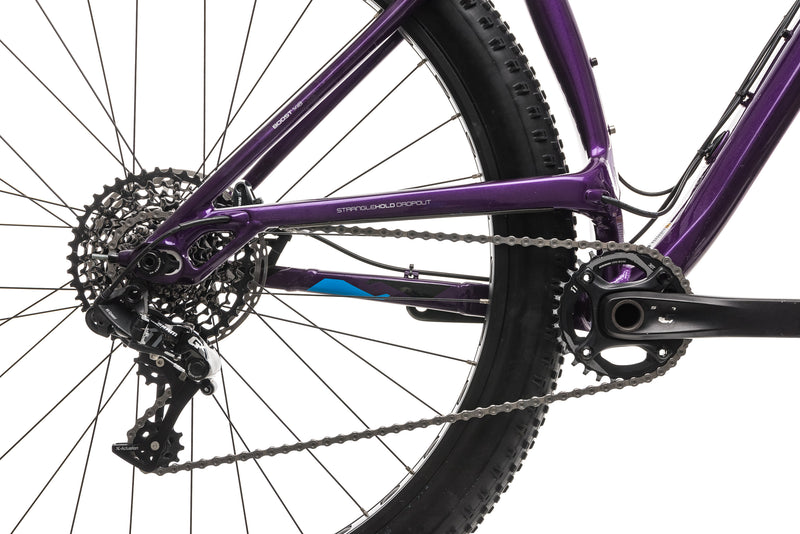
RockShox sets a minimum recommended temperature of 32-degrees because sub-freezing temps can cause the seals to shrink, allowing air to leak between the positive to the negative chambers. The only time suspension would be a disadvantage is if the majority of your riding is done on groomed cross-country ski trails. The 100-mil-travel RockShox Bluto fork helped keep the front end of the bike tracking smooth through sections of trail that were ‘post-holed’ by human (and animal) feet and through natural trail dips and divots. Suspension is awesome–even when trails aren’t particularly rough. Although, 20 years ago nobody thought mountain bikes needed suspension, and look what happened.

2015 TREK STACHE 7 BRAKE SPECS PLUS
Snow-packed trails are naturally pretty smooth, plus the low tire pressure helps to smooth out any trail impurities. Going into this test, I was a bit skeptical of suspension on a fatbike. This will cause panic moments, and probably some crashes, but unless you square up a tree, crashing is like landing in a very cold foam pit. Because the Farley does handle like a ‘summer-time’ bike it’s very easy to forget that the surface you’re riding on is snow, and traction is quite limited. The head angle, at 70 degrees, teeters toward the steep end of the spectrum, but helps keep the bike controllable at the slower speeds that snow often affords. The smaller clearance helps with this because it allows for shorter chainstays, which, at 17.32 inches, are actually shorter than Trek’s Stache 29er trail hardtail. In spite of this, I’m actually glad that Trek opted for the smaller tires because when conditions are hard-packed the Farley rides a lot like a standard mountain bike. Running really low pressures (in the 3 PSI range) will help climbing traction, but make for some unwanted squish in corners and while mashing on the pedals. This is especially noticeable on climbs and makes for more hike-a-bikes. The bigger tires will ‘float’ on top of the soft snow, where smaller tires will dredge in and lose traction. In soft conditions there’s a big difference between 4- and 5-inch tires.

With all this Wisconsin packed into the Farley, I find it a bit interesting that Trek opted to limit the its tire clearance to 4 inches, where other big-name, warmer-climate-based bike companies are opting for 5 inches of clearance. The only thing that could make this bike more Wisconsin is cheesehead-shaped hand pogies. The frame is named after the larger-than-life comic Chris Farley, who was born and raised in Madison the wheels are named after the folklore animal, the Jackalope, which may not have originated in the Badger State, but has seriously deep roots there and the tires are called Hodag, which is a fearsome mythological beast that resides near the town of Rhinelander in Northern Wisconsin. Trek’s Farley is about as ‘Wisconsin’ as a bike can be.


 0 kommentar(er)
0 kommentar(er)
